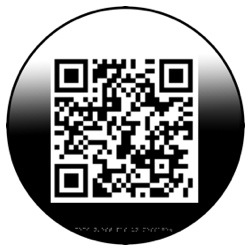

Below are clues to the names of a number of cities. The name of each city is a homograph of an English word. The clues provided are faintly etymological, and probably not adequately beneficial. All your geographical erudition will probably not be sufficient to provide any real help. Alack.
These towns, as with the preceding bunches, are all ostensibly in the United States, though that may not be accurate. If true, you still probably haven’t heard of any of them, unless you grew up in one of them, in which case you have our sympathies.
- ???, Ohio
- Via Middle English, Old English, and Proto-
Germanic words all meaning “village”, from PIE *ḱóymos, also meaning “village” - ???, Oklahoma
- Massively translingual word traced back to faddish spelling in 1839 Boston, incorrectly thought by some to come from Choctaw, various West African languages, Scots immigrants, or Martin Van Buren
- ???, Oregon
- Via Old English “to perforate”, via Proto-
Germanic, from PIE *bher-, “to pierce” - ???, Pennsylvania
- Via French, from a Greek πανικός meaning “of the god of woods and fields”
- ???, Rhode Island
- Via Old French and Medieval Latin, from Latin “to cleanse”, going back to PIE *peu- or *pu-
- ???, South Carolina
- From an Old French word for “tail” + “pejorative agent noun”
- ???, South Dakota
- Via Old French and Late Latin, from Ancient Greek φαίνω “I appear” (going back to PIE *bheh-, “to shine”) and ἐπί “upon”
- ???, Tennessee
- A back-
formation from an English word, via Old French from Latin “not” + “easy”, going back to PIE *dheh1-, “to do”
There are no prizes this month
On the other hand, what definitely was not too easy was the “Decrypt the Missives from the Cosmos” puzzle in the July issue, which entreated readers to decipher a series of hidden clues in that issue’s Letter from the Associate Editor, ultimately leading to The One True Message™ hidden in the text.
Our grand prize winners are Tanjam and Adam Jacobson who managed to work out pretty much everything
 In the meantime, here’s a breakdown of what you, dear reader, could have sought and found:
In the meantime, here’s a breakdown of what you, dear reader, could have sought and found:
In the main text were several subtle (and less subtle) colors and styles applied to various letters. Among the messages hidden were “encrypted”, “no comment”, “no peeking”, “no space intentionally left blank”, “this is not it”, and, most importantly, “pay attention to punctuation”.
In fact, punctuation is key. The period after the word formalism is not a period, but rather a high-
And in fact, upon closer inspection, there are a number of small dots below the QR code, which turn out to be Braille:
![]()
![]()
![]()
![]()
![]() It reads, Ceci n’est pas un message.
It reads, Ceci n’est pas un message.
 However, the first half of the Braille has square dots, while the other half has round dots. The square ones have tiny dots and dashes in them. Decoded in Braille order
However, the first half of the Braille has square dots, while the other half has round dots. The square ones have tiny dots and dashes in them. Decoded in Braille order
..- -.- -. --.- .- .-.-.- .-- .... .. ... --. .. --- -. .... --.. ..--.. -.. -. - .-. - -. ..-. .- -... .-- .... .- --- -.. -. .- ... ... .-.-.- - -..- .-. .... .-.-.- - .-- ...- -..- .. ... .- --.- .- -... .- .-.. ..- .. -.. -.. -.-- --. - .. .-. .-.-.- - - .... .... .. ... .- .-.. ..- .... -.-- .-- .- .-.. ..- -- ..- .--. .-.-.- .- --- .-.. .. - -. -. .--. - .-. --- ..-. .... .. .- -.. - -.-- . -... -.. - .-. -. ...- - .-.-.- .-- . .-.. .. ..- -.- -- ...- --. .-.-.- .- --- .- -..- ..- -.- .-.. -- --- ..-. --- -.-- ..- - .-. - -... .- .-.-.-
That, of course, is merely the following:
Uknqa! Wh is gi on hz? Dn trtnf ab wh ao dn ass. Txrh. Twvx is aq ab aluidd ygtir. Tthh is aluhyw alumup. Ao li tnnp trofhi ad tyebd trnvt. We li ukmvg. Ao ax uklmo fo yu trtba.
For reasons that are unclear, the next step was the hardest
Anyway, the Huffmenglish text, naturally, decodes back into standard English orthography as The One True Message™, below:
Aaaaarrrrrrggghhh! What is going on here? Don’t speculate about what you don’t understand. Duh. Trey is all about Speculative Grammarian. Jonathan is uncharacteristically underappreciated. You like German zucchini and Portuguese trout. We like counterintelligence. You are overcompensating for your misunderstandings.
The exact meaning of this message is, however, classified.
There are also reports of several instances of whankydoodle hidden in the text, but that has nothing to do with the puzzle. However, there may be some information relevant to that matter to be gleaned from this month’s Letter from the Editor-